
Want to know the one metric that determines whether your marketing budget grows or gets slashed next quarter? It's marketing ROI.
Marketing ROI is the ultimate success metric for any business. When you can prove positive ROI, marketing budgets increase. When you can't, they shrink. It's that simple.
But here's the problem: while calculating the formula is straightforward (Revenue - Marketing Cost) / Marketing Cost, getting accurate numbers to plug into that formula is anything but easy.
You know what you're spending on marketing—that part's clear. But do you know exactly how much revenue each marketing channel generates? Can you tie specific leads back to specific campaigns? And do you know which of those leads are actually qualified prospects versus time-wasting spam?
Without answers to these questions, you're essentially making educated guesses about your marketing ROI. And in today's data-driven world, guesses don't get budget approvals.
Sign up here for a free 14-day WhatConverts trial. You can also request a 30-minute live demo, where we’ll answer your questions and show you how to track marketing ROI.
Why Traditional Marketing Metrics Fall Short
There’s a big problem with traditional metrics like click-through rate, impressions, page views, and web traffic: none of these metrics are tied directly to revenue.
Think about what really matters to your business—generating qualified leads that turn into sales. Traditional metrics might tell you that your campaigns are performing well in terms of visibility and engagement, but they don't tell you if those campaigns are actually driving valuable business opportunities.
The Attribution Gap
Most basic tracking tools only show that someone converted—not who they are or what value they bring to your business. Google Analytics tells you how many goal completions occurred in a given time frame, but you don't know who those people are or whether they're qualified prospects.
You can see that someone came from an organic search and completed a goal, but you can't tell if they represent a $500 opportunity or a $50,000 opportunity. Without this crucial information, you can't accurately calculate your marketing ROI.
Quality vs Quantity Challenge
Not all conversions are equal. A campaign generating 100 form submissions might look successful, but what if 90 of those are from unqualified prospects or spam?
Meanwhile, another campaign might only generate 10 conversions, but if 8 of those turn into high-value clients, its actual ROI is significantly higher. Without tools that help distinguish between qualified and unqualified leads, you're likely optimizing for quantity rather than quality.
Offline Conversion Blind Spots
In many industries, the most valuable leads come via phone calls. In fact, one study found that phone call leads converted customers at a rate of 273 times the conversion rate for email outreach. Yet traditional analytics tools struggle to attribute these offline conversions to their marketing sources.
Essential Components of Accurate Marketing ROI Measurement
To measure marketing ROI effectively, you need three key components working together:
Complete Lead Attribution
To measure marketing ROI, you must tie individual leads to marketing campaigns. You need to know that a lead worth $10,000 in potential sales called your business after seeing a Google Ad or reading a specific blog post.
This means tracking marketing data across web forms, phone calls, live chats, and offline interactions—then tying all that data to specific marketing channels, campaigns, and keywords.
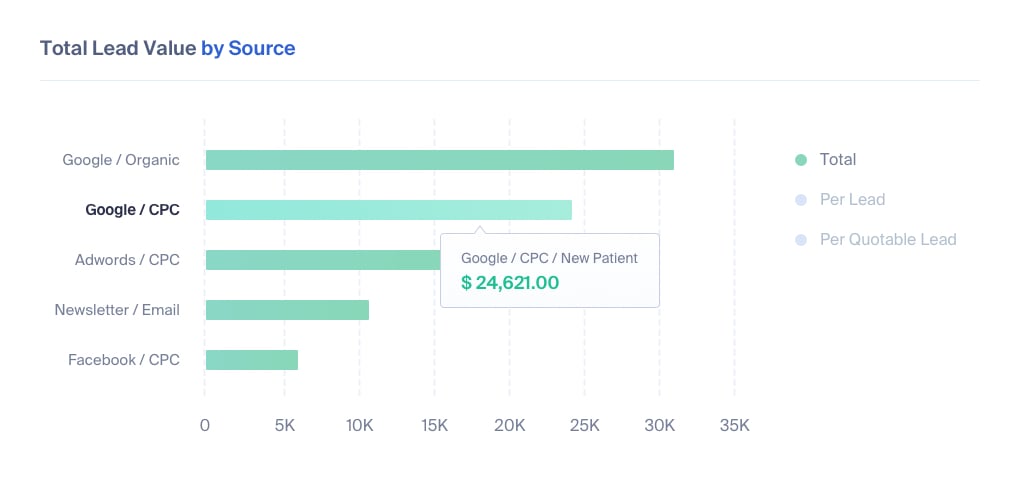
Effective Lead Quality Assessment
According to WebFX research, 54% of marketers say that lead quality is their biggest challenge. It's not enough to know that someone filled out a form. That person could be a solicitor, a competitor, or someone lacking the budget for your product or service.
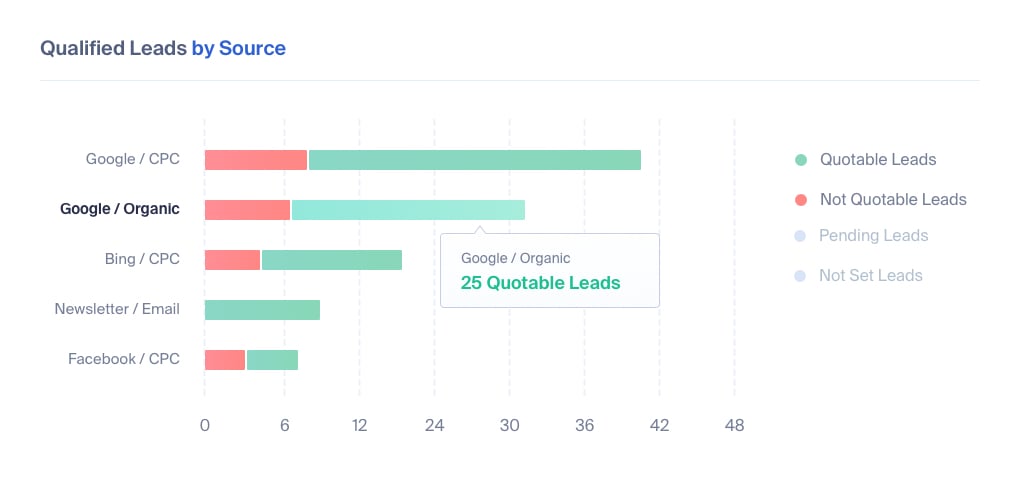
With WhatConverts, you can qualify leads with simple "Qualified/Not Qualified" labels to remove junk leads from your marketing data. Your marketing reports will then only include qualified leads, giving you a cleaner picture of your true marketing ROI.
Direct Revenue Connection
The final component is connecting marketing activities to actual revenue. This creates the direct line from marketing spend to business results that executives and clients demand.
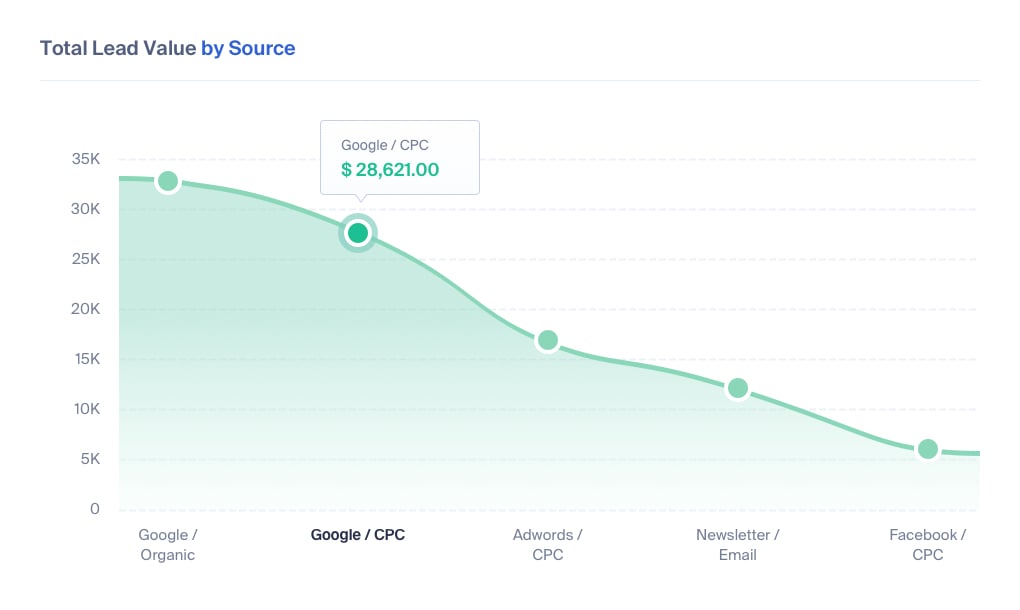
With WhatConverts, you can add quote value to leads, showing how much revenue you're getting from each marketing campaign. The lead data shows both the marketing source and the quoted value, providing a direct connection between marketing activities and potential revenue.
Measuring ROI Across Different Marketing Channels
Marketing ROI varies significantly across channels. Understanding these differences helps you allocate your budget more effectively. Let's explore practical approaches to measuring ROI across key marketing channels:
SEO ROI Measurement
Organic search often presents the biggest ROI measurement challenge because it's a long-term investment without direct campaign costs like paid media. To measure SEO ROI effectively, you need to track landing page performance by examining which pages generate leads, not just traffic.
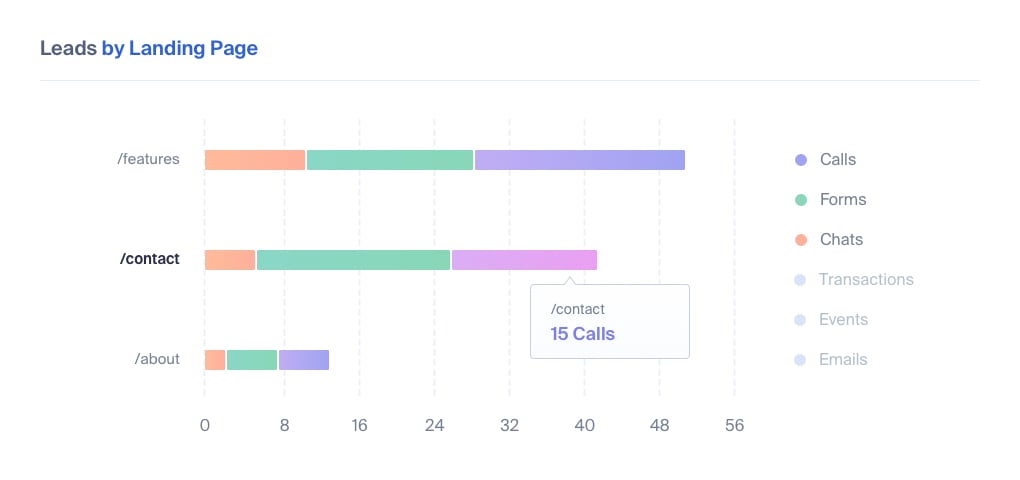
Look beyond basic organic traffic metrics by implementing URL parameters for internal links and custom landing pages for different content categories. This helps attribute leads to specific SEO initiatives rather than treating organic search as one monolithic channel.
Once you've connected leads to specific SEO efforts, tools like WhatConverts can help verify which landing pages are driving phone calls, form submissions, and chat inquiries—giving you a complete picture of organic search performance.
Google Ads ROI Tracking
Paid search offers more granular tracking capabilities, but many advertisers still struggle to connect ad spend to actual revenue. Improve your Google Ads ROI measurement by implementing keyword-level tracking to identify which specific terms drive qualified leads. Often, only a small percentage of keywords generate most of your valuable leads, so knowing which ones are successful lets you reallocate budget more effectively.
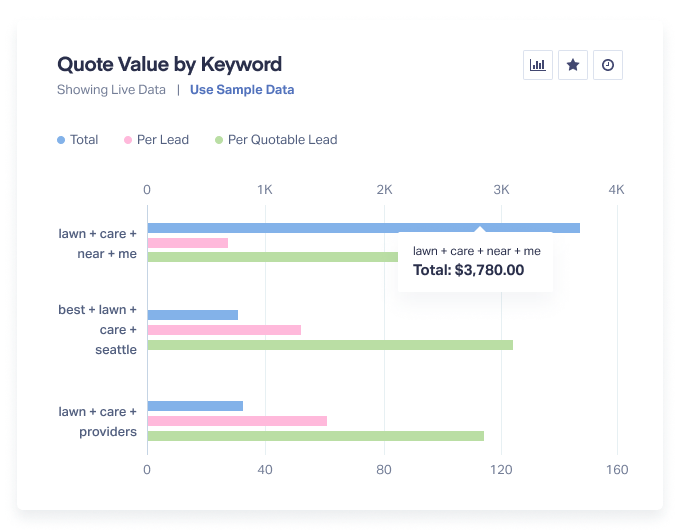
It’s also important to set up proper conversion tracking for all conversion types, including offline phone calls. Google’s native call tracking lacks key pieces of information that are necessary to get a comprehensive understanding of where calls came from, what each lead wants, and which are most likely to turn into paying customers.
WhatConverts tracks every Google Ads lead back to the specific ad, campaign, and keyword. You'll see which ads deliver qualified leads, which keywords drive valuable leads, and which elements deserve more budget. This granular view beats standard Google Ads reporting because it shows you individual lead data.
Social Media Marketing ROI
Social media presents unique ROI challenges due to its diverse conversion paths and attribution complexities. To improve social media ROI measurement, you’ll need to implement platform-specific tracking for each social channel rather than using the same parameters across all platforms. Facebook, LinkedIn, and Twitter users behave differently and should be tracked accordingly.
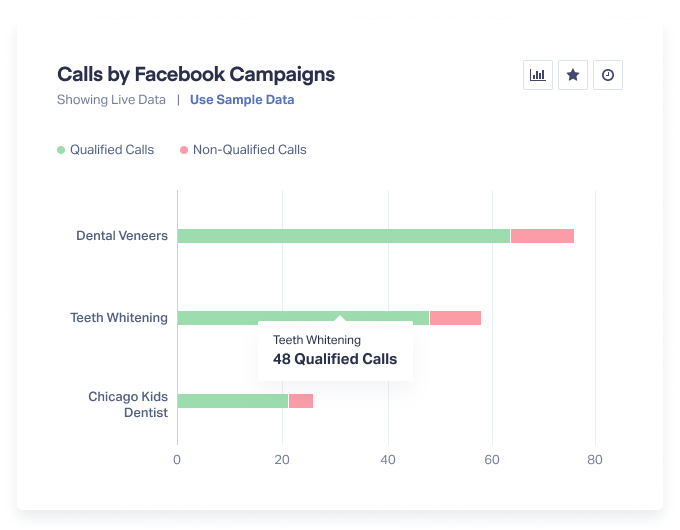
Be sure to differentiate between engagement metrics and actual lead generation stats, and use a multi-touch attribution system that can account for assisted conversions where social media influenced a purchase but wasn’t the final converting channel.
WhatConverts tracks every social media lead back to the specific campaign, helping you identify which social ads are truly working, not just generating engagement.
Common ROI Measurement Pitfalls to Avoid
Even with the best intentions, many marketers fall into common traps that undermine their ROI measurement efforts. These pitfalls aren't just minor inconveniences—they can fundamentally skew your understanding of which marketing investments are working and which aren't.
Ignoring the Complete Customer Journey
One of the most prevalent mistakes in ROI measurement is focusing exclusively on last-click attribution. This approach gives all the credit to the final touchpoint before conversion, ignoring the crucial role that other channels play in nurturing prospects through the decision-making process.
This narrow view leads to misallocated budgets as marketers double down on "converting" channels while cutting supposedly "underperforming" channels that are actually vital to starting and nurturing customer relationships.
To avoid this pitfall, implement a multi-touch attribution model that distributes appropriate credit across all relevant touchpoints. This might mean adopting weighted models that assign different values to first, middle, and last touch interactions, or employing more sophisticated algorithmic attribution approaches for larger, more complex marketing operations.
Focusing on Quantity Over Quality
The math is simple: 100 leads that convert at 1% with an average value of $1,000 generate less revenue than 50 leads that convert at 10% with an average value of $2,000. Yet many marketing reports would celebrate the campaign that generated 100 leads as more successful. Without proper lead qualification and value tracking, this misalignment between reported success and actual business impact will continue.
To overcome this pitfall, implement a consistent lead qualification framework that aligns marketing and sales around clear definitions of lead quality. Track not just conversion rates but qualified conversion rates, and monitor the actual revenue generated from different lead sources.
Working with Disconnected Data
When marketing, sales, and customer information lives in separate systems, connecting the dots across the complete customer lifecycle becomes exceedingly difficult.
This data fragmentation creates blind spots in your ROI measurement. You might see strong conversion numbers in your marketing analytics but have no visibility into whether those conversions represent valuable prospects. Or you might notice increasing sales numbers without being able to connect them back to the specific marketing campaigns that initiated those customer relationships.
Implement integrated systems that share data across marketing, sales, and customer success functions—either through native integrations, middleware solutions, or comprehensive platforms that track the complete customer journey.
Conclusion: Moving Beyond Metrics to Marketing ROI Mastery
Measuring marketing ROI accurately requires tracking the complete journey from initial marketing touch to final sale. This approach provides a clear picture of which marketing efforts are actually driving business value.
The key is implementing systems that capture detailed lead information, connect it to marketing sources, distinguish between qualified and unqualified leads, and ultimately tie it all back to revenue generation.
Lead-based reporting can fundamentally change your marketing perspective. When you can see exactly how many qualified leads each channel generates and what value they represent, you gain the clarity needed to optimize campaigns, justify marketing investments, and demonstrate your impact on the bottom line.
Sign up here for a free 14-day WhatConverts trial. You can also request a 30-minute live demo, where we’ll answer your questions and show you how to track marketing ROI.
Get a FREE presentation of WhatConverts
One of our marketing experts will give you a full presentation of how WhatConverts can help you grow your business.
Schedule a Demo
Grow your business with WhatConverts





